Mystical Creatures: Origins and Myths of Werewolves
- Mel Bridges

- Apr 7
- 8 min read
Updated: Apr 15
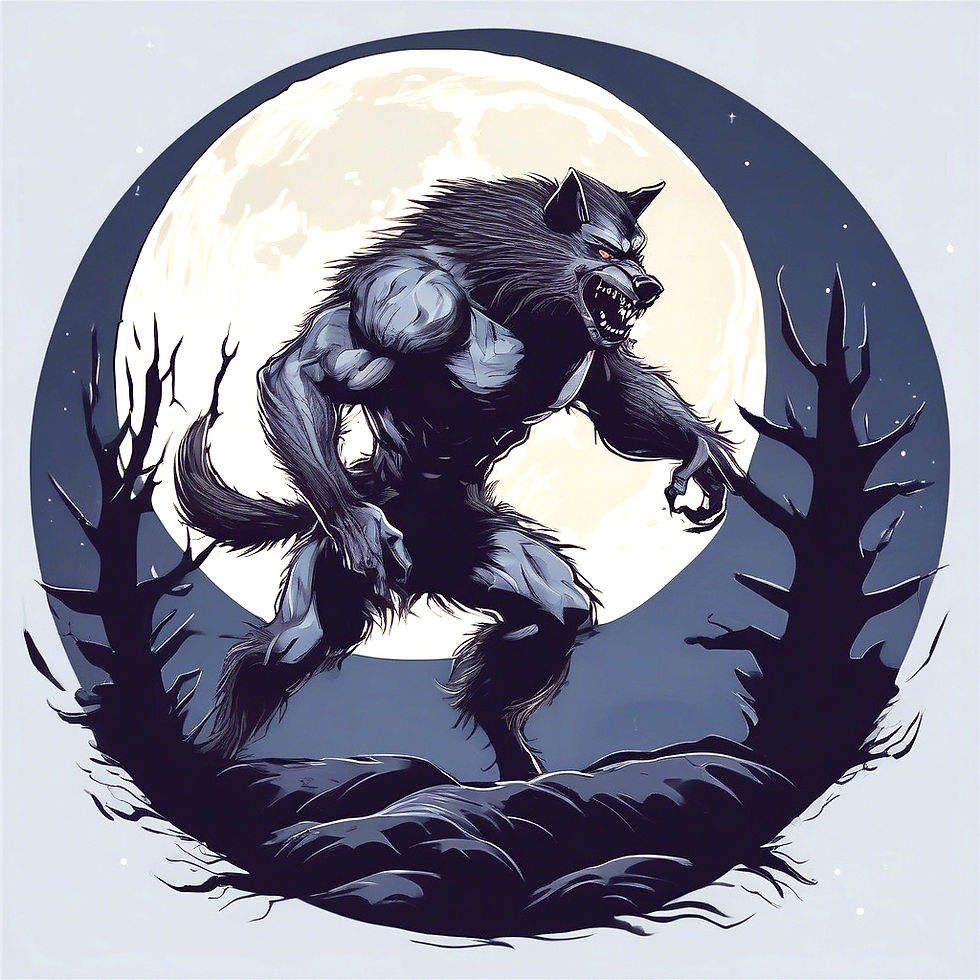
Spooky tales of werewolves have entranced countless generations. Stories of humans transforming into wolves under the light of the full moon are a staple in folklore and modern culture. But where did these stories originate? This article examines the fascinating myths and legends surrounding werewolves across diverse cultures, revealing how they reflect our understanding of humanity.
The Evolution of the Legend
Werewolves are more than just eerie figures in horror stories; their mythology spans many cultures and centuries. The roots can be traced back to ancient civilizations where shape-shifting beings were common.

In Greek mythology, the tale of King Lycaon shows the origin of the werewolf myth. This king of Arcadia had the audacity to slaughter his own son Nyctimus and serve him as a meal to Zeus, seeing whether Zeus would recognize human flesh. But the god was not amused. Outraged by this gruesome act, Zeus transformed Lycaon into a wolf, while miraculously restoring Nyctimus to life. This story emphasizes the consequences of arrogance and inhumanity.

In Norse mythology, Germanic paganism persisted longest in Scandinavian cultures, where wolf-men traditions thrived. Norway's Harald I was said to have commanded a group of Úlfhednar — fierce warriors who dressed in wolf hides, channeling the spirits of these animals to enhance their battle prowess.
Historical accounts reveal that these warriors were feared for their unmatched power, transforming their identities on the battlefield. Like berserkers, they were feared fighters, resistant to pain and known for killing with ruthless efficiency.
These legendary warriors drew inspiration from the Norse god Odin, and their exploits may have influenced Slavic folklore, spreading to Kievan Rus' in the 11th century. The Belarusian Prince Vseslav of Polotsk was said to possess supernatural speed and agility, prowling the night as a wolf. His tale, recounted in The Tale of Igor's Campaign, blurs the line between human and beast.
Werewolves in European Folklore
European folklore offers some of the most well-known werewolf legends. In ancient Greece, a peculiar tale of transformation is recounted by Pliny the Elder, in his extensive tome Natural History. Pliny tells of a story from Greek author Euanthes of a yearly practice in Arcadia where a man was randomly selected from the Anthus clan to undergo a bizarre ritual. He'd hang his clothes on an oak tree, take a refreshing dip in a nearby lake, and then transform into a wolf. If he managed to resist attacking a human for nine long years, he could reverse the spell by swimming back across the lake, shedding his furry coat, and reclaiming his human form.
In The City of God, St. Augustine echoes the tales of the Arcadians swimming to a special pool and changing into wolves. He further discusses a myth related to witches and their ability to transform humans into wolves. He warns against the dangers of demonic powers and the deceitful practices of pagan sorcerers.
Similarly, the 4th-century Council of Ancyra's Capitulatum Episcopi condemned physical transformations, including werewolfism. This influential text warned that anyone believing in such transformations, except those performed by God Himself, was an infidel.
In these works of Roman writers, werewolves often receive the name versipellis ("turnskin"). Augustine instead uses the phrase "in lupum fuisse mutatum" (changed into the form of a wolf) to describe the physical metamorphosis of werewolves, which is similar to phrases used in the medieval period.
As Christianity spread during the Middle Ages, its influence shaped these werewolf legends and fueled fear and paranoia. During this period, the persecution of people accused of witchcraft and being werewolves walked hand-in-hand. Estimates suggest that around 30,000 to 60,000 people were executed during the witch hunts, with many accused of lycanthropy facing brutal fates. This connection highlights how fear of the unknown ignites societal reactions, leading to tragic events.
In Switzerland's Valais and Vaud regions, suspicions about lycanthropy (term explained below under "The Psychological Perspective") emerged as early as the 15th century. As the witch hunts intensified across Europe, so did the search for werewolves. Peak hysteria reached its zenith in the 17th century, only to subside by the 18th.
Folklore from the Americas
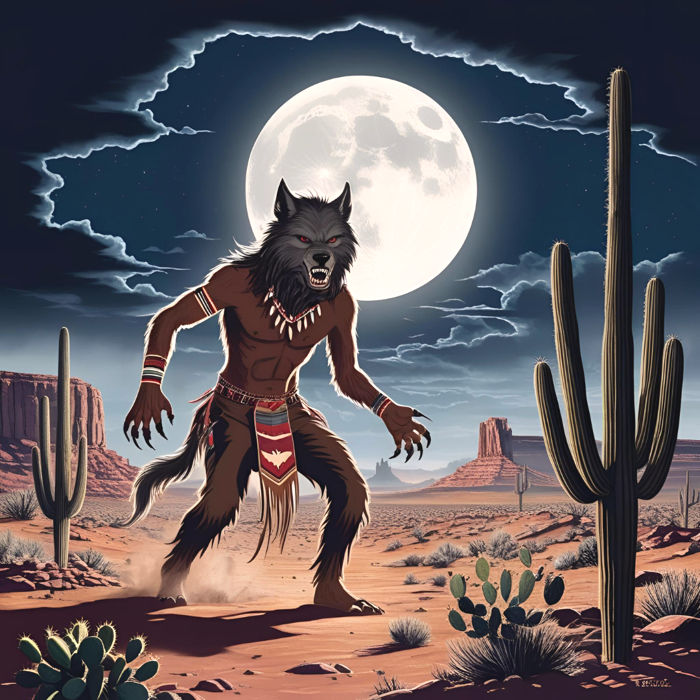
In Native American culture, the wolf is often seen as a symbol of respect rather than horror. The "skinwalker," known as yee naaldlooshii in Navajo mythology, is a shaman capable of transforming into various animals, including wolves. These beings are shrouded in mystery, yet feared by all who know their dark power. With abilities that border on the supernatural, skinwalkers can command the elements, control minds, and even unleash death itself.
Witches and shamans acquire their shape-shifting skill through sinister rituals — acts of darkness that invite forbidden energies into their world. Crossing paths with a skinwalker is an omen: a warning that severe misfortune or even death itself lurks around the corner.
Unlike European werewolves, skinwalkers are sometimes viewed as protectors with deep spiritual connections. Their transformations showcase their ability to tap into nature's wisdom instead of being a source of fear.
In Mexican folklore, a fascinating figure emerges — the Nahual or Nagual, a human with the uncanny ability to transform into various animals, such as a jaguar, puma, or wolf. These mysterious beings are often revered as guardians and protectors of their communities, but also wield their powers for more sinister purposes. Nagualism is a practice centered around making a profound connection — one that awakens by uniting with a person's tonal animal.

In French-Canadian and Cajun folklore lies the legendary loup-garou, a creature born from a curse that transforms humans into wolves. The term "loup-garou" originates from French, where loup means wolf and garoul translates to werewolf. The creature has an alternate name rougarou, which is a variant spelling and pronunciation of loup-garou.
In Cajun country, particularly in Louisiana's swamps, sugar cane fields, and forests, the rougarou beasts roam and stalk their prey. These creatures are steeped in Creole and Cajun tradition, often used as cautionary tales to scare children into behaving. According to legend, they hunt down and punish those who fail to observe Lent — a sacred period of fasting and repentance in Catholicism. By recklessly breaking Lent for seven consecutive years, one can be cursed with becoming a rougarou, according to some French-Catholic tales.
Another haunting tale is of the rougarou's 101-day spell, a period during which it wanders the night, driven by an insatiable hunger for human blood. Once the curse is transferred to another unsuspecting victim through a deadly bite, the creature returns to its human form, but only briefly — as it must feed again before dawn breaks.
African Werewolf Folklore
In Ethiopian mythology, we have the boudas — hyena men with magical powers who can change into a hyena. The boudas are feared and shunned, with tales of them robbing graves and casting curses. In West Africa, the Ashanti people have lore about were-leopards, people who transform into leopards. They believe were-leopards use their powers for dark purposes, such as staging attacks under the cover of darkness. Even today, some communities practice rituals to protect themselves from these feared shape-shifters, a testament to the enduring power of these ancient myths.
Werewolf Myths of the East
In Asia, the werewolf concept presents itself differently. The Rōnin in Japanese folklore embodies a shape-shifter with wolf traits. This reflects Japan's unique interpretation of transformation myths, often focusing on honor and duty.
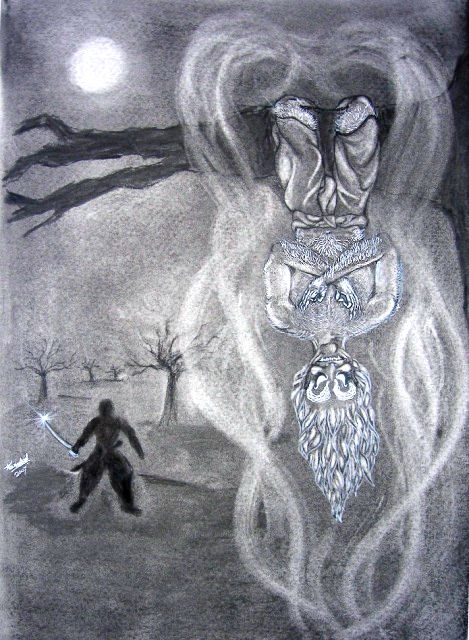
While Chinese mythology doesn't feature traditional werewolf tales, it does have shape-shifting creatures like the huli jing, which can transform into various forms, including wolves. Similar to the werewolf myth, these fox spirits can switch between human and animal shapes.
Vetalas in Indian mythology are mischievous spirits tied to the afterlife, known for their eerie presence in cemeteries and forests. The vetalas possess corpses and reanimate these bodies into wolf-like creatures, often playing pranks on humans. Their unsettling appearance only adds to their mystique: sharp, angular faces and claw-like fingers hint at a darker, more animalistic side, sharing similarities to the werewolf myth. The mysterious vetalas have the ability of insight into past, present, and future.

In Burmese mythology, the thaman kyah roams free — a shape-shifting were-tiger that mirrors the werewolf legend of European cultures. A tragic tale from Burmese lore tells of a brother who unwittingly married a fierce were-tigress. The couple meet an untimely end after unleashing their savagery on humans.
The Psychological Perspective

The rise of werewolf legends also aligns with psychological insights. "Lycanthropy" is a rare mental condition in which people believe they can turn into wolves. This delusion often occurs in those who believe in reincarnation and the idea that human souls can transform into nonhuman forms.
Some studies show that the moon is correlated to affecting mood changes. This association has been with us for quite some time — an urban legend of sorts. Humans are made mostly of water, about 50-65%. Given that the moon's gravity affects ocean tides, it's not hard to imagine its influence on our bodies too. After all, a force great enough to pull oceans tides might just as easily nudge our bodily rhythms.

In one study's findings, the lunar cycle has a stronger impact on men's sleep patterns than women's. Researchers studied the duration and quality of sleep from new moon to full moon (waxing period) and back again, and discovered that men's rest was more closely tied to the moon's phases.(1)
Research also suggests that a brighter lunar cycle disrupts sleep patterns, leading to fatigue and irritability in our ancestors. In fact, studies have confirmed that the lunar cycle affects our sleep today.(2, 3)
A small study of 17 bipolar patients revealed an intriguing connection: their rapid mood swings, between states of depression and mania, synced with the lunar cycle like clockwork. While the exact mechanism is unknown, researchers suspect that disruptions to the body's internal clock, its circadian rhythm and sleep-wake cycle, might be to blame.(4)
However, while many proclaim the belief that moons cause behavioral changes and mood swings, scientific evidence is inconclusive and often contradictory. Some experts see strong moon-beliefs as mere illusions. They argue that we're prone to "lunar lunacy" — paying too much attention to coincidences and correlations that support our confirmation-biased notions about the moon's power.(4)
The Modern Werewolf
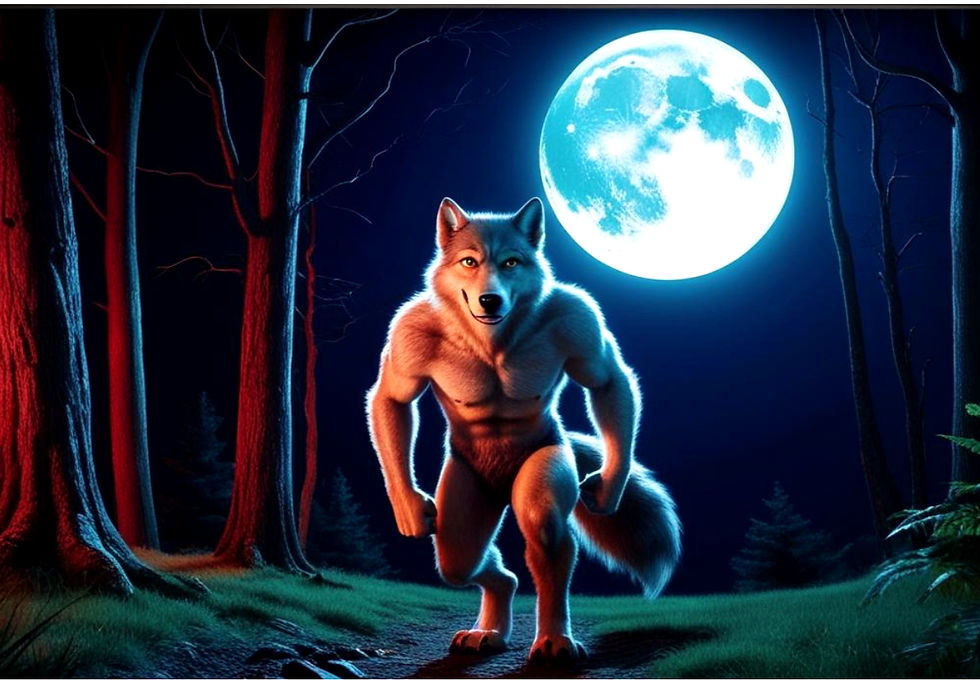
Contemporary media has transformed the werewolf myth into a cultural phenomenon. Classic literature like Bram Stoker’s "Dracula" laid the groundwork, while contemporary films such as "The Twilight Saga" and TV shows like "Teen Wolf" present varied portrayals.
Some adaptations focus on horror, while others depict werewolves as misunderstood figures wrestling with their identities. This shift reflects a broader understanding of monsters, moving away from fear and toward empathy.
These evolving narratives serve as mirrors of contemporary society. They highlight the ongoing challenges we face, making the werewolf myth equally relevant today as it was centuries ago.
Reflections on the Werewolf Legend
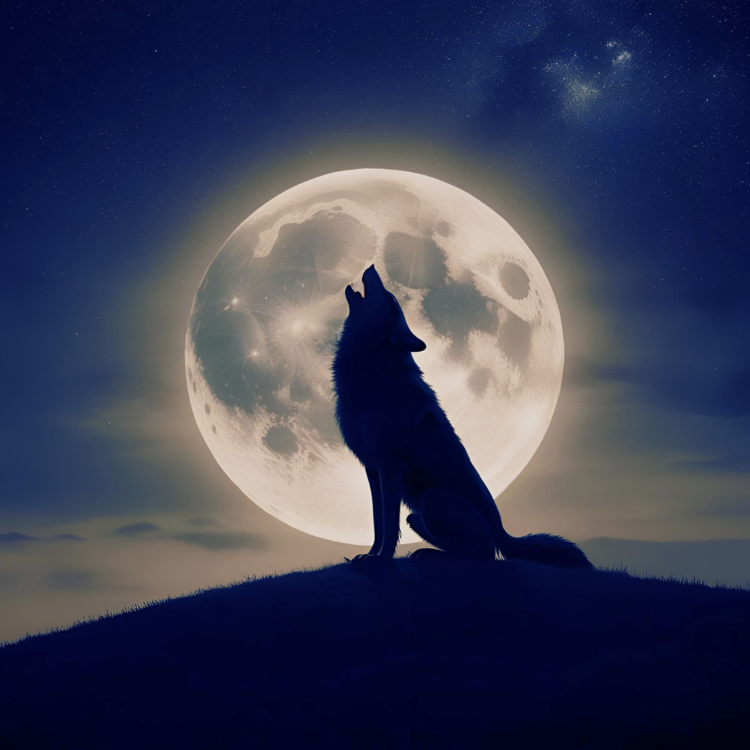
The legend of werewolves symbolizes the bridge between history, culture, and psychology. It embodies humanity's ongoing struggle with the wild and the civilized.
Exploring these myths deepens our understanding of not just these creatures but also of ourselves. The fascination with werewolves continues as we uncover the layers of stories that connect us all in our shared human experience.
Citations
Sjøgren, K. (Oct 26, 2021). "Lunar cycle appears to affect men more strongly than women." Science News DK, https://sciencenews.dk/en/lunar-cycle-appears-to-affect-men-more-strongly-than-women#:~:text=Another%20possibility%20is%20that%20hormones,of%20testosterone%20in%20the%20body.
Golembiewski, K. (Aug 16, 2019). "Why Do We Still Believe in ‘Lunacy’ During a Full Moon?" Discover,
https://www.discovermagazine.com/mind/why-do-we-still-believe-in-lunacy-during-a-full-moon
Vyazovskiy V, Foster R. (Jun 16, 2014). "Sleep: A Biological Stimulus from Our Nearest Celestial Neighbor?" Current Biology. Vol 24, Is 12. https://www.sciencedirect.com/science/article/pii/S0960982214005922
Anonymous (Oct 24, 2022). "Does the Moon Affect Humans?" Cleveland Clinic, Health Essentials. https://health.clevelandclinic.org/moon-effects-on-humans






Comments